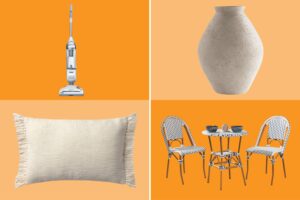Credit: architecturaldigest.com
Architects and designers know the gaps in the design market intimately, and they often have great ideas—and maybe even some sketches—for licensed product lines to fill them. However, setting out to create them is a more complicated process, one that requires the right manufacturing partner and a host of considerations. When should one explore licensing a product design with an established brand? What are the benefits of having your own line—and what might be the potential drawbacks? AD PRO consulted six designers with lucrative product licensing agreements to glean their insights.
Pursuing a Licensed Product Line
Determine your value
“Everyone has to think first about why a company would want to license with you. What do you bring to the table to help them sell the product? If you have a brand name, there will be interest,” says New York–based designer and AD100 Hall of Fame member Bunny Williams, who has licensed product through The Bunny Williams Outdoor Collection for Century Furniture.
Likewise, interior and product designer Libby Langdon of New York firm Libby Interiors (whose lines include upholstery and casegoods for Fairfield, wall decor with Paragon, lighting with Crystorama, and accessories with A&B Home) stresses the importance of brand awareness. “The first step,” she says, “is building your brand and raising awareness of who you are and what you do.” Langdon also emphasizes the importance of price point when considering a licensing partner. “You need to know your audience, your voice, and where you can promote your collections,” she offers. “I know my lane, and I know my audience. I have partnered with companies where the product was so expensive I wouldn’t have purchased it for my clients. A bad fit for me is something that’s crazy expensive or too inexpensive.”
Question your motives
Before entering into product licensing, it’s critical to ask yourself why you want to go into licensing in the first place. “Do you want a deal to get your name out there, or do you want to make money and really sell your product?” Langdon asks. “If you want to make money, it’s really important to understand how your aesthetic can translate into what your target audience is looking for.”
AD PRO members enjoy exclusive benefits. Get a year of unlimited access for $25 $20 per month.
But it’s not all about money. Collaborations between designers and manufacturers must feel genuine to be viable for both participants. AD100 Washington, DC–based designer Darryl Carter, who has licensing agreements with Baker Furniture, Benjamin Moore, and Urban Electric Co., says he cannot work with brands that don’t align with his ethos. “I have walked away from several opportunities that might have been successful in the eyes of others, but these undertakings would have compromised my own integrity,” he says. “I suppose some may find fame rewarding, but, in my opinion, authenticity and integrity are far more important.”
While product licensing with the right partner can indeed be fruitful—both monetarily and in terms of notoriety—it is also a massive undertaking. “Make sure you are ready,” urges Windsor Smith, founder of Santa Monica, California’s Windsor Smith Home, with home furnishing products licensed to companies as diverse as Kravet, Century Furniture, Arteriors, Boyd Lighting, Mansour Modern, and Jamie Beckwith Collection. “It is a huge commitment, like opening a tandem division of your interior design business.”
There also must be a market need for your product to help ensure its success. Identify a void then design a solution. “Understanding the market demand is crucial: Does this product fulfill a need or desire within the market, and can it stand out?” says Houston-based designer Nina Magon who creates licensed product for Cosentino, Studio M Lighting, Wall and Decò, and Sahrai Milano. “Another major consideration is exclusivity—whether you want a limited-edition piece to retain a sense of rarity or a more widespread product to increase accessibility and reach.”
Identify potential partners
Quality is key, regardless of price point. Williams believes that the most essential consideration is choosing the correct licensing partner, “One who will execute your design in the quality that you wish to attach your name to,” she says. Barry Goralnick, principal of his namesake New York architecture and design firm, concurs. “Since it’s your name on the product, you must be proud of the result,” says the architect, who designs products for Villeroy and Boch, Watermark Designs, Arta Broch, Currey & Company, and Visual Comfort. “If the quality is subpar, your line may struggle, no matter how strong or innovative your designs are.”









